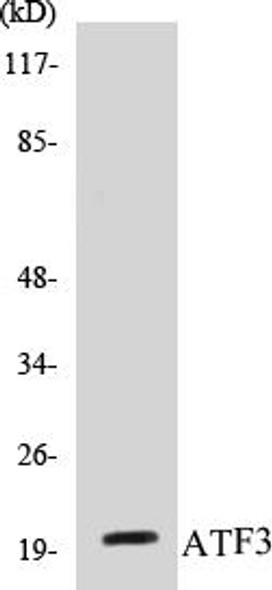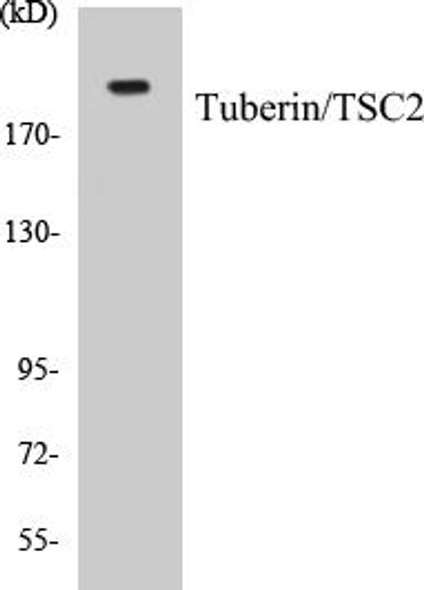Description
HRH1 Colorimetric Cell-Based ELISA Kit
The HRH1 Colorimetric Cell-Based ELISA Kit is specifically designed for the quantitative detection of HRH1 (Histamine H1 Receptor) levels in cell lysates and tissue homogenates. This kit offers high sensitivity and specificity, providing accurate and reproducible results for research applications.The HRH1 receptor plays a critical role in mediating the effects of histamine, a key neurotransmitter involved in allergic reactions, inflammatory responses, and immune regulation.
Dysregulation of HRH1 has been implicated in various disorders such as allergies, asthma, and autoimmune diseases, making it an important target for drug development and therapeutic interventions.With its easy-to-use protocol and reliable performance, the HRH1 Colorimetric Cell-Based ELISA Kit is an essential tool for studying the function of HRH1 in physiological and pathological conditions, paving the way for new insights and advancements in biomedical research.
| Product Name: | HRH1 Colorimetric Cell-Based ELISA |
| Product Code: | CBCAB00054 |
| ELISA Type: | Cell-Based |
| Target: | HRH1 |
| Reactivity: | Human |
| Dynamic Range: | > 5000 Cells |
| Detection Method: | Colorimetric 450 nmStorage/Stability:4°C/6 Months |
| Format: | 96-Well Microplate |
The HRH1 Colorimetric Cell-Based ELISA Kit is a convenient, lysate-free, high throughput and sensitive assay kit that can detect HRH1 protein expression profile in cells. The kit can be used for measuring the relative amounts of HRH1 in cultured cells as well as screening for the effects that various treatments, inhibitors (ie siRNA or chemicals), or activators have on HRH1.
Qualitative determination of HRH1 concentration is achieved by an indirect ELISA format. In essence, HRH1 is captured by HRH1-specific primary antibodies while the HRP-conjugated secondary antibodies bind the Fc region of the primary antibody. Through this binding, the HRP enzyme conjugated to the secondary antibody can catalyze a colorimetric reaction upon substrate addition. Due to the qualitative nature of the Cell-Based ELISA, multiple normalization methods are needed:
| 1. | A monoclonal antibody specific for human GAPDH is included to serve as an internal positive control in normalizing the target absorbance values. |
| 2. | Following the colorimetric measurement of HRP activity via substrate addition, the Crystal Violet whole-cell staining method may be used to determine cell density. After staining, the results can be analysed by normalizing the absorbance values to cell amounts, by which the plating difference can be adjusted. |
| Database Information: | Gene ID: 3269, UniProt ID: P35367, OMIM: 600167, Unigene: Hs.1570 |
| Gene Symbol: | HRH1 |
| Sub Type: | None |
| UniProt Protein Function: | H1R: In peripheral tissues, the H1 subclass of histamine receptors mediates the contraction of smooth muscles, increase in capillary permeability due to contraction of terminal venules, and catecholamine release from adrenal medulla, as well as mediating neurotransmission in the central nervous system. Belongs to the G-protein coupled receptor 1 family. |
| UniProt Protein Details: | Protein type:Membrane protein, integral; GPCR, family 1; Receptor, GPCR; Membrane protein, multi-pass Chromosomal Location of Human Ortholog: 3p25 Cellular Component: nucleoplasm; integral to plasma membrane; cytoplasm; plasma membrane Molecular Function:G-protein coupled receptor activity; histamine receptor activity Biological Process: G-protein coupled receptor protein signaling pathway; inositol phosphate-mediated signaling; positive regulation of vasoconstriction; eosinophil chemotaxis; visual learning; regulation of synaptic plasticity; G-protein signaling, coupled to IP3 second messenger (phospholipase C activating); positive regulation of inositol trisphosphate biosynthetic process; regulation of vascular permeability; inflammatory response; memory |
| NCBI Summary: | Histamine is a ubiquitous messenger molecule released from mast cells, enterochromaffin-like cells, and neurons. Its various actions are mediated by histamine receptors H1, H2, H3 and H4. The protein encoded by this gene is an integral membrane protein and belongs to the G protein-coupled receptor superfamily. It mediates the contraction of smooth muscles, the increase in capillary permeability due to contraction of terminal venules, the release of catecholamine from adrenal medulla, and neurotransmission in the central nervous system. It has been associated with multiple processes, including memory and learning, circadian rhythm, and thermoregulation. It is also known to contribute to the pathophysiology of allergic diseases such as atopic dermatitis, asthma, anaphylaxis and allergic rhinitis. Multiple alternatively spliced variants, encoding the same protein, have been identified. [provided by RefSeq, Jan 2015] |
| UniProt Code: | P35367 |
| NCBI GenInfo Identifier: | 547645 |
| NCBI Gene ID: | 3269 |
| NCBI Accession: | P35367.1 |
| UniProt Secondary Accession: | P35367,Q6P9E5, A8K047, |
| UniProt Related Accession: | P35367 |
| Molecular Weight: | 487 |
| NCBI Full Name: | Histamine H1 receptor |
| NCBI Synonym Full Names: | histamine receptor H1 |
| NCBI Official Symbol: | HRH1 |
| NCBI Official Synonym Symbols: | H1R; H1-R; HH1R; hisH1 |
| NCBI Protein Information: | histamine H1 receptor; histamine receptor, subclass H1 |
| UniProt Protein Name: | Histamine H1 receptor |
| Protein Family: | Histamine H1 receptor |
| UniProt Gene Name: | HRH1 |
| UniProt Entry Name: | HRH1_HUMAN |
| Component | Quantity |
| 96-Well Cell Culture Clear-Bottom Microplate | 2 plates |
| 10X TBS | 24 mL |
| Quenching Buffer | 24 mL |
| Blocking Buffer | 50 mL |
| 15X Wash Buffer | 50 mL |
| Primary Antibody Diluent | 12 mL |
| 100x Anti-Phospho Target Antibody | 60 µL |
| 100x Anti-Target Antibody | 60 µL |
| Anti-GAPDH Antibody | 60 µL |
| HRP-Conjugated Anti-Rabbit IgG Antibody | 12 mL |
| HRP-Conjugated Anti-Mouse IgG Antibody | 12 mL |
| SDS Solution | 12 mL |
| Stop Solution | 24 mL |
| Ready-to-Use Substrate | 12 mL |
| Crystal Violet Solution | 12 mL |
| Adhesive Plate Seals | 2 seals |
The following materials and/or equipment are NOT provided in this kit but are necessary to successfully conduct the experiment:
- Microplate reader able to measure absorbance at 450 nm and/or 595 nm for Crystal Violet Cell Staining (Optional)
- Micropipettes with capability of measuring volumes ranging from 1 µL to 1 ml
- 37% formaldehyde (Sigma Cat# F-8775) or formaldehyde from other sources
- Squirt bottle, manifold dispenser, multichannel pipette reservoir or automated microplate washer
- Graph paper or computer software capable of generating or displaying logarithmic functions
- Absorbent papers or vacuum aspirator
- Test tubes or microfuge tubes capable of storing ≥1 ml
- Poly-L-Lysine (Sigma Cat# P4832 for suspension cells)
- Orbital shaker (optional)
- Deionized or sterile water
*Note: Protocols are specific to each batch/lot. For the correct instructions please follow the protocol included in your kit.
| Step | Procedure |
| 1. | Seed 200 µL of 20,000 adherent cells in culture medium in each well of a 96-well plate. The plates included in the kit are sterile and treated for cell culture. For suspension cells and loosely attached cells, coat the plates with 100 µL of 10 µg/ml Poly-L-Lysine (not included) to each well of a 96-well plate for 30 minutes at 37°C prior to adding cells. |
| 2. | Incubate the cells for overnight at 37°C, 5% CO2. |
| 3. | Treat the cells as desired. |
| 4. | Remove the cell culture medium and rinse with 200 µL of 1x TBS, twice. |
| 5. | Fix the cells by incubating with 100 µL of Fixing Solution for 20 minutes at room temperature. The 4% formaldehyde is used for adherent cells and 8% formaldehyde is used for suspension cells and loosely attached cells. |
| 6. | Remove the Fixing Solution and wash the plate 3 times with 200 µL 1x Wash Buffer for five minutes each time with gentle shaking on the orbital shaker. The plate can be stored at 4°C for a week. |
| 7. | Add 100 µL of Quenching Buffer and incubate for 20 minutes at room temperature. |
| 8. | Wash the plate 3 times with 1x Wash Buffer for 5 minutes each time. |
| 9. | Add 200 µL of Blocking Buffer and incubate for 1 hour at room temperature. |
| 10. | Wash 3 times with 200 µL of 1x Wash Buffer for 5 minutes each time. |
| 11. | Add 50 µL of 1x primary antibodies (Anti-HRH1 Antibody and/or Anti-GAPDH Antibody) to the corresponding wells, cover with Parafilm and incubate for 16 hours (overnight) at 4°C. If the target expression is known to be high, incubate for 2 hours at room temperature. |
| 12. | Wash 3 times with 200 µL of 1x Wash Buffer for 5 minutes each time. |
| 13. | Add 50 µL of 1x secondary antibodies (HRP-Conjugated AntiRabbit IgG Antibody or HRP-Conjugated Anti-Mouse IgG Antibody) to corresponding wells and incubate for 1.5 hours at room temperature. |
| 14. | Wash 3 times with 200 µL of 1x Wash Buffer for 5 minutes each time. |
| 15. | Add 50 µL of Ready-to-Use Substrate to each well and incubate for 30 minutes at room temperature in the dark. |
| 16. | Add 50 µL of Stop Solution to each well and read OD at 450 nm immediately using the microplate reader. |
(Additional Crystal Violet staining may be performed if desired – details of this may be found in the kit technical manual.)






